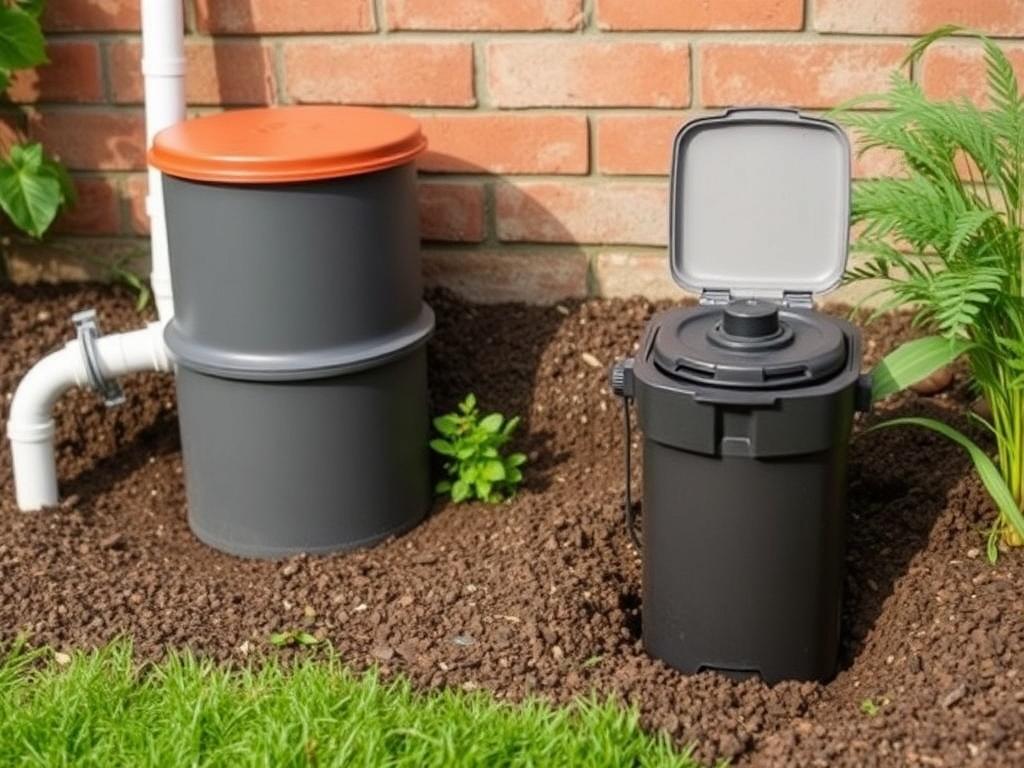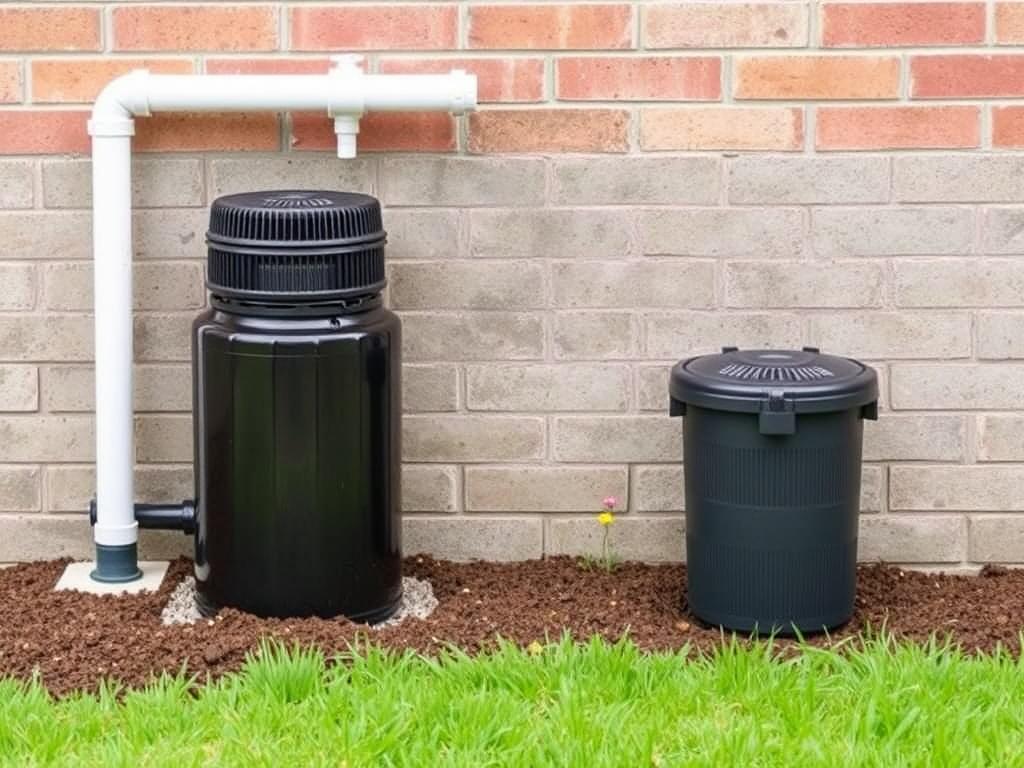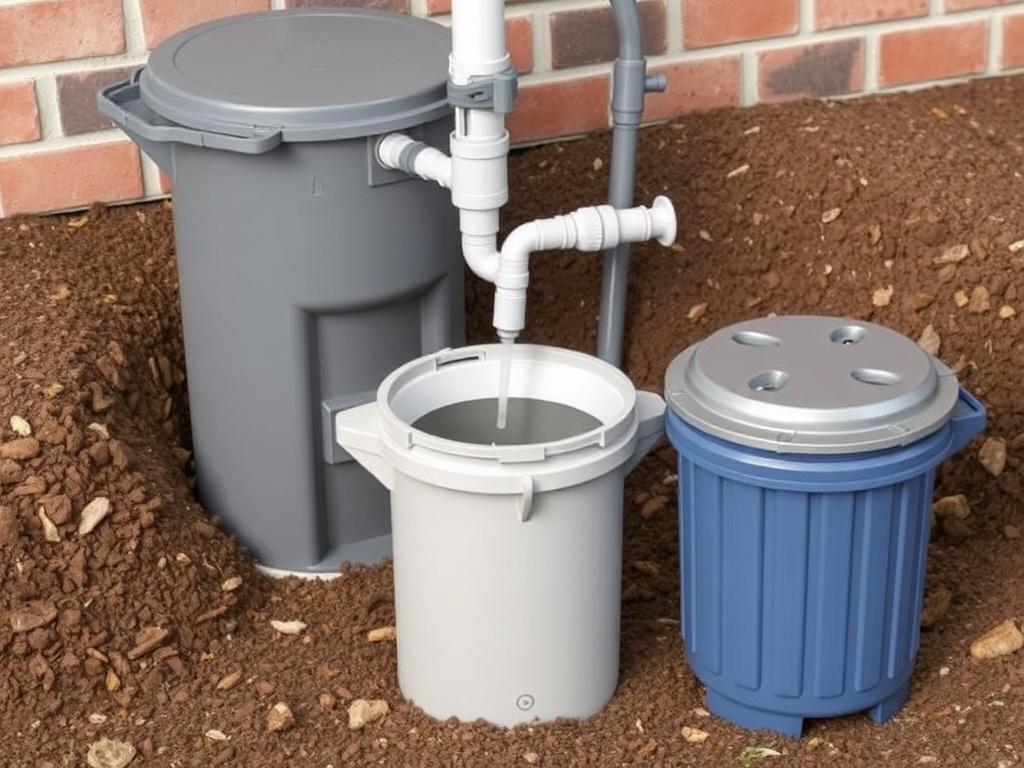When it comes to managing household waste and maintaining a healthy plumbing system, many homeowners face an important question: Are septic tanks and garbage disposals compatible? This topic often sparks confusion and debate because while garbage disposals offer convenience, septic tanks require careful maintenance. Finding the right balance between the two can help you avoid costly plumbing emergencies and keep your septic system functioning correctly. In this article, we’ll explore how garbage disposals work, what septic tanks do, and the practical considerations when using these two systems together.
- Understanding Garbage Disposals: What Are They and How Do They Work?
- Common Types of Food Waste Suitable for Garbage Disposals
- Septic Tanks: What Are They and How Do They Function?
- Key Components of a Septic System
- Why the Question of Compatibility Matters
- Potential Issues When Combining Garbage Disposals with Septic Tanks
- Tips for Using Garbage Disposals with Septic Tanks Safely
- Best Practices for Garbage Disposal Use on Septic Systems
- Environmental and Cost Considerations
- Cost Comparisons of Septic Tank Maintenance with and without Garbage Disposals
- Alternatives to Garbage Disposals for Septic System Owners
- Food Waste Alternatives for Septic Households
- Conclusion
Understanding Garbage Disposals: What Are They and How Do They Work?
Garbage disposals are kitchen appliances designed to grind leftover food scraps into small particles so they can easily pass through plumbing pipes. These devices typically attach under the kitchen sink and use a motorized grinding mechanism to break down food waste. When you switch on the disposal, blades or impellers shred the food, turning it into a slurry that flows down the drain.
Garbage disposals are popular because they reduce the volume of food waste, making kitchen cleanup simpler and potentially reducing the amount of trash you put out. However, not all food scraps are safe for disposals; fibrous materials, grease, and starchy foods can clog pipes or damage the unit. Knowing how garbage disposals operate helps clarify why their compatibility with septic tanks sometimes raises red flags.
Common Types of Food Waste Suitable for Garbage Disposals
| Food Item | Safe for Disposal? | Notes |
|---|---|---|
| Vegetable scraps | Yes | Soft vegetables grind well |
| Small bones | No | Can damage blades |
| Fruit peels | Yes | Avoid tough or stringy peels |
| Grease and oils | No | Cause clogs in pipes |
| Pasta, rice | No | Swells and clogs drains |
Septic Tanks: What Are They and How Do They Function?

A septic tank is an underground wastewater treatment system commonly used in rural and suburban homes without access to municipal sewer lines. The primary role of a septic tank is to receive wastewater from your home, including water from sinks, toilets, and showers. Inside the tank, solids settle to the bottom, forming sludge, while oils and grease float to the top as scum. The liquid in the middle then slowly drains into a leach field or drain field, where natural bacteria break down remaining contaminants.
Septic tanks rely on a delicate biological ecosystem to function effectively. The bacteria in the tank digest organic waste, helping prevent solids from clogging the system. If too much solid waste accumulates, or harmful substances disrupt bacterial populations, the septic tank can back up or even fail entirely. Understanding the mechanics of septic tanks is critical to appreciate why some substances, including certain types of food waste from garbage disposals, may pose problems.
Key Components of a Septic System
- Inlet Pipe: Carries wastewater from the house to the septic tank.
- Septic Tank: Holds wastewater, allowing solids to settle and scum to float.
- Outlet Pipe: Releases the clarified liquid to the drain or leach field.
- Drain Field (Leach Field): Soil area that further treats effluent by allowing it to percolate.
- Soil: Acts as a natural filter breaking down pollutants.
Why the Question of Compatibility Matters

The compatibility of septic tanks and garbage disposals mainly hinges on the impact of increased solid waste on the septic system’s bacteria and overall function. Garbage disposals send food particles into the wastewater stream, increasing the volume of solids that enter the septic tank. Excess solids can fill the tank faster than normal, requiring more frequent pumping, and may upset biological processes vital for waste breakdown.
Many septic system professionals and environmental experts caution against combining garbage disposals with septic tanks because overloading the system can cause clogs, odors, backups, and expensive repairs. However, not all homeowners have the same experiences, and technological advances or proper use can mediate some problems.
Potential Issues When Combining Garbage Disposals with Septic Tanks
| Issue | Explanation | Potential Consequence |
|---|---|---|
| Increased Sludge Accumulation | Food waste raises the amount of solids settling in the tank. | More frequent pumping, increased maintenance cost. |
| Bacterial Imbalance | Grease and toxic foods may kill necessary bacteria in the tank. | Poor waste breakdown leading to clogging. |
| Drain Field Clogging | Excessive solids can flow into the drain field. | Drain field failure, expensive replacement. |
| System Backups | Clogged pipes and tanks lead to wastewater backups. | Plumbing damage and unpleasant odors. |
Tips for Using Garbage Disposals with Septic Tanks Safely
If you decide to use a garbage disposal with your septic system, several practical steps can help reduce the risk of damage and maintain system health. These tips center around minimizing the amount of food waste entering the septic tank, limiting harmful substances, and scheduling regular maintenance.
Best Practices for Garbage Disposal Use on Septic Systems
- Limit the Types of Food Waste: Avoid putting grease, fats, oils, fibrous foods, rice, and pasta down the disposal. Stick to soft vegetable scraps and small fruit peels that break down easily.
- Use the Disposal Sparingly: Only grind food waste occasionally rather than continuously, to prevent overwhelming the septic tank bacteria.
- Run Plenty of Water: Always use cold water when operating the disposal to help flush particles through the pipes and prevent clogs.
- Consider Additives with Caution: Some microbial additives claim to boost septic tank bacteria, but their effectiveness varies. Consult a septic professional before use.
- Schedule Regular Pumping: Have your septic tank inspected and pumped more frequently if you use a garbage disposal, generally every 2-3 years or as recommended.
Environmental and Cost Considerations
Beyond system functionality, there are environmental and economic aspects to weigh when combining garbage disposals and septic tanks. Using a garbage disposal can reduce the volume of garbage sent to landfills, which may be beneficial from a waste management perspective. However, the increased demands on the septic system can lead to more frequent pumping, higher water usage, and potential drain field damage, which incurs repair costs and environmental hazards.
Additionally, some municipalities encourage or restrict the use of garbage disposals with septic systems depending on local environmental policies. It’s wise to check with your local health or environmental department before installing or continuing to use a garbage disposal on a septic system.
Cost Comparisons of Septic Tank Maintenance with and without Garbage Disposals
| Maintenance Item | Typical Cost Without Garbage Disposal | Typical Cost With Garbage Disposal | Notes |
|---|---|---|---|
| Septic Tank Pumping | $250 – $400 | $300 – $500 | More frequent pumping needed with disposal |
| Septic Tank Inspection | $100 – $200 | $100 – $200 | Same cost; more inspections recommended with disposal |
| Drain Field Repairs | $2,000 – $10,000+ | $2,500 – $12,000+ | Potentially higher risk with disposal use |
Alternatives to Garbage Disposals for Septic System Owners

If you’re worried about risking your septic tank but still want an eco-friendly way to handle food waste, several alternatives to garbage disposals can help. These approaches allow homes to manage organic scraps without negatively impacting their septic systems.
Food Waste Alternatives for Septic Households
- Composting: Turning vegetable and fruit scraps into compost reduces landfill waste and creates nutrient-rich soil for gardening.
- Separate Food Waste Bins: Collect food scraps and take them to community composting centers when available.
- Trash Bin Use: Remove food waste to traditional trash, though less environmentally friendly, it protects your septic system.
- Install a Greywater System: Some homes can divert sink water for reuse, reducing strain on septic systems.
Each alternative offers its pros and cons, but in general, these options help septic systems last longer and avoid costly repairs related to garbage disposal waste.
Conclusion
The question of whether septic tanks and garbage disposals are compatible doesn’t have a simple yes or no answer. While it is technically possible to use a garbage disposal with a septic system, it requires careful management to avoid overwhelming the delicate bacterial balance and physical capacity of the tank. Avoiding harmful food waste materials, running plenty of water, and scheduling regular septic maintenance can mitigate many risks, but homeowners must accept the possibility of increased upkeep and potential repairs. For those looking to protect their septic tanks in the long term, alternatives such as composting or using waste bins might be preferable. Ultimately, informed decision-making and consulting local professionals are crucial steps before combining these two common home systems into one.
Помогла вам статья?






